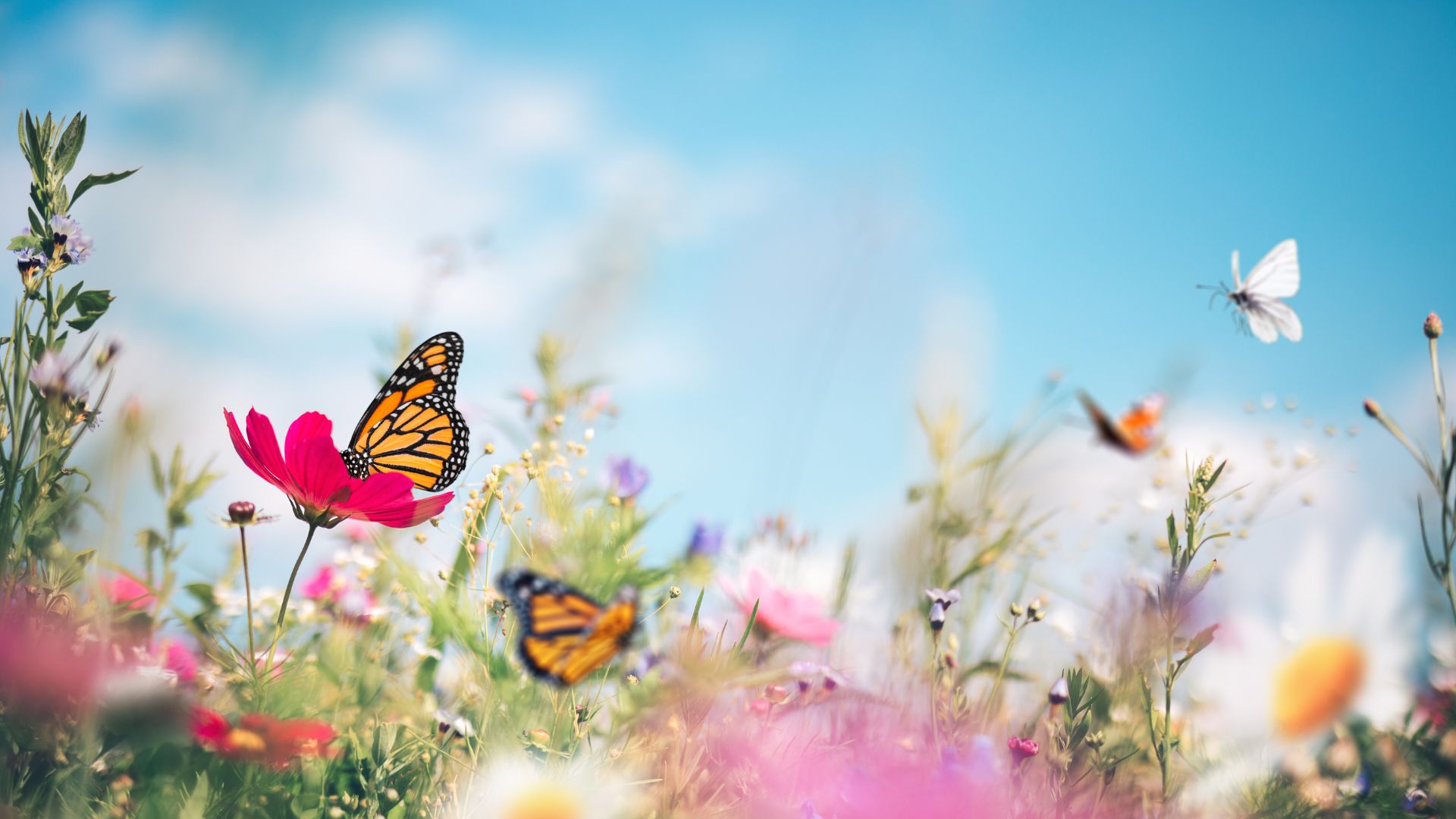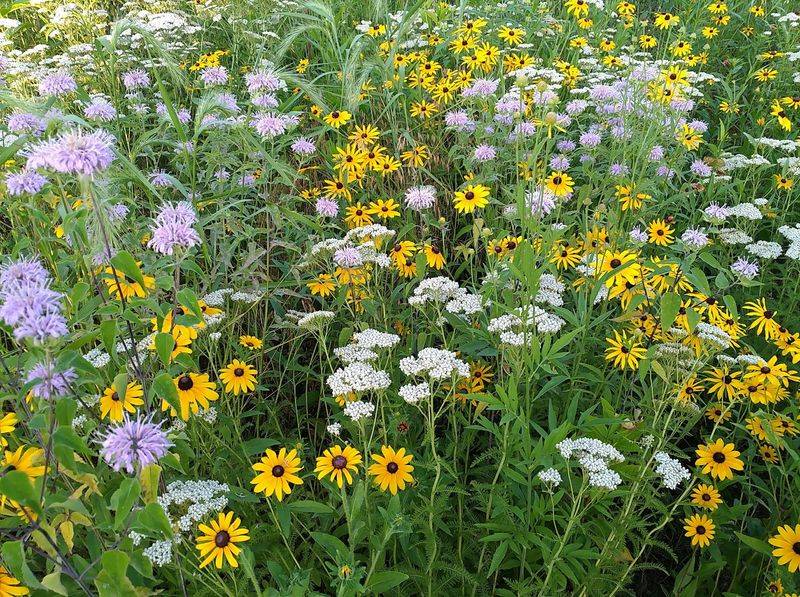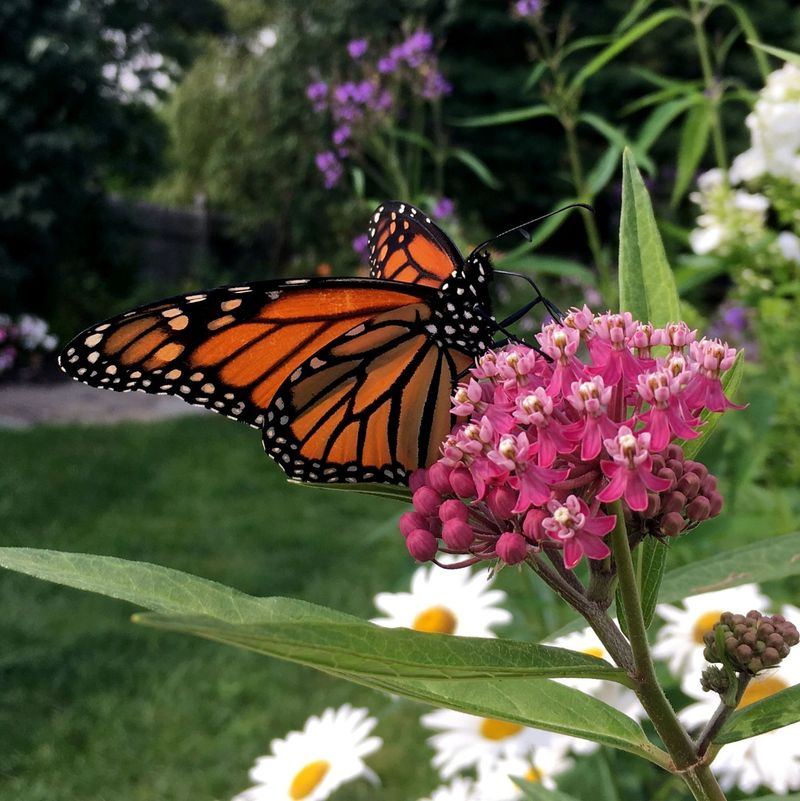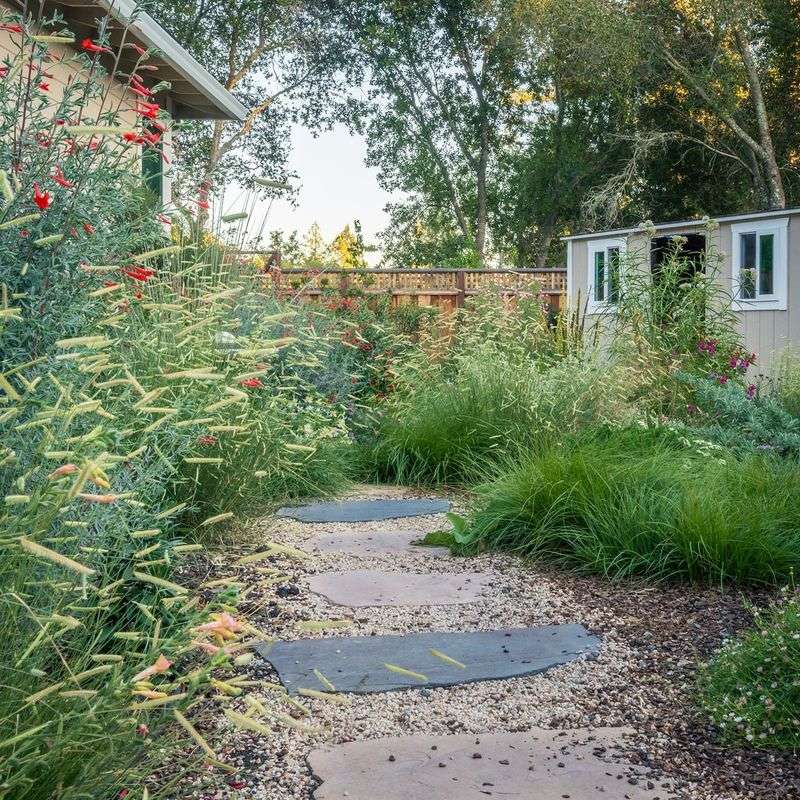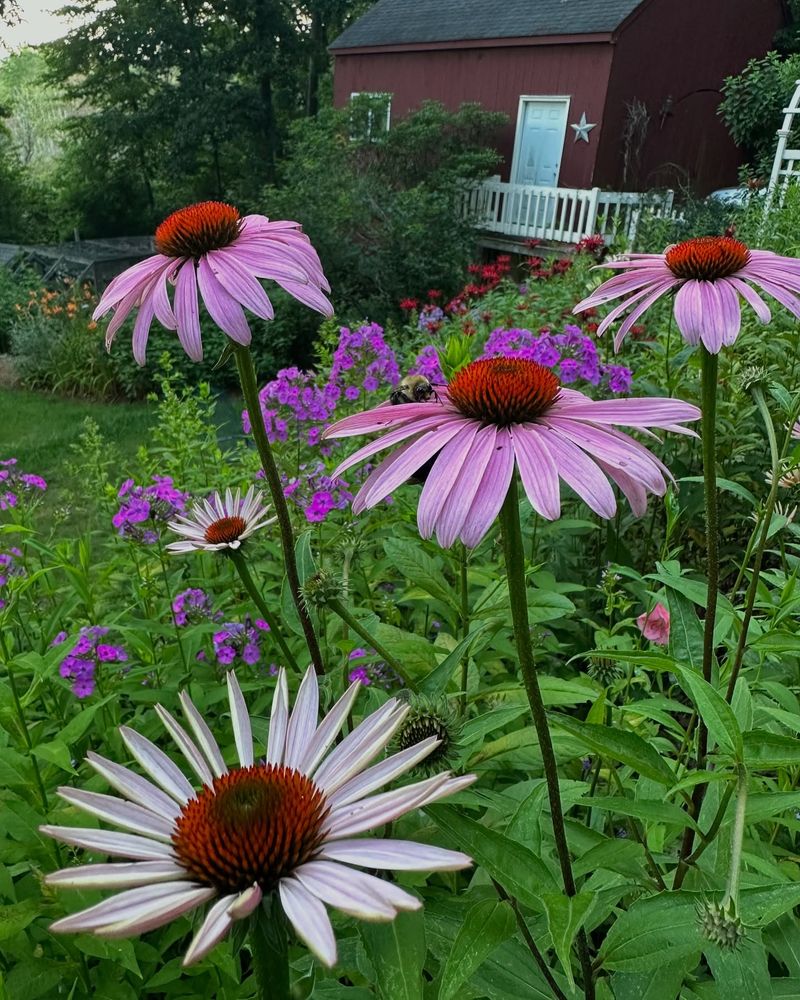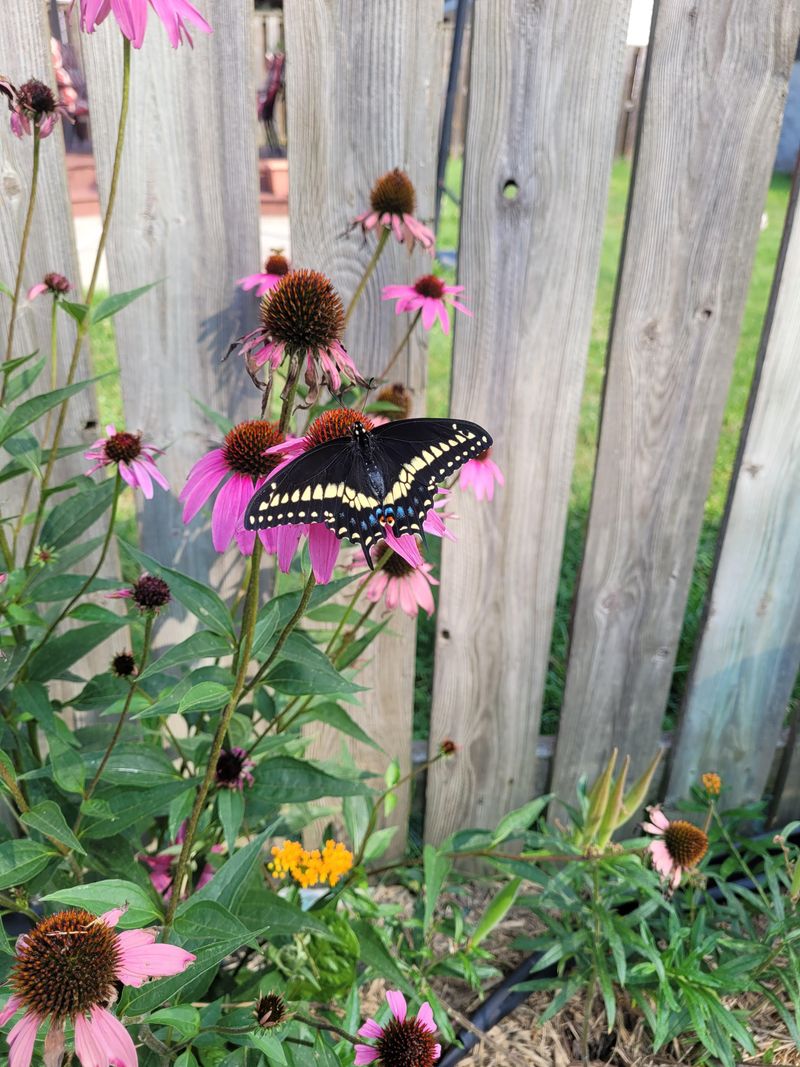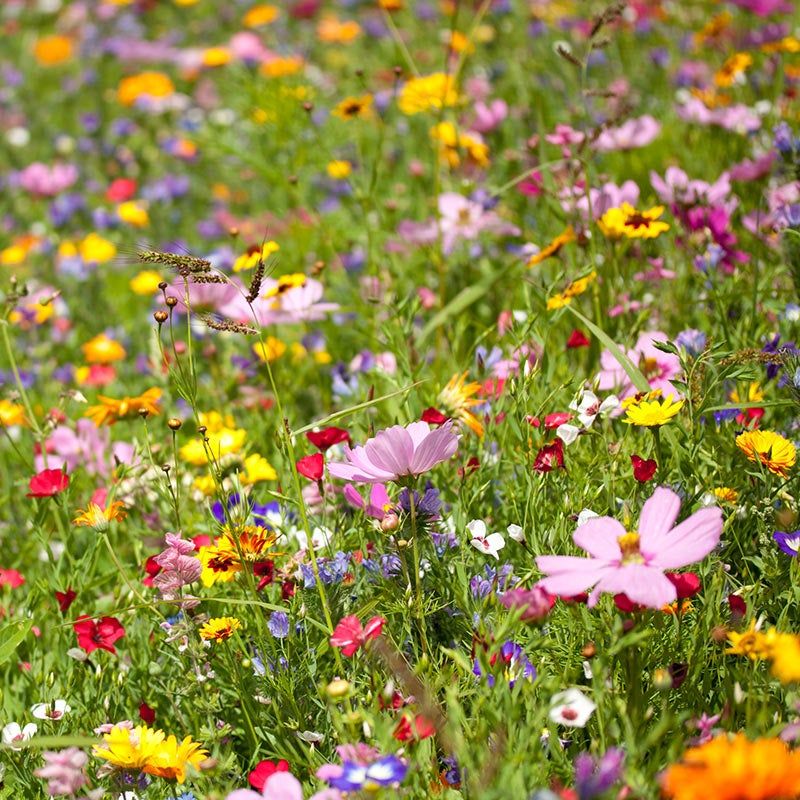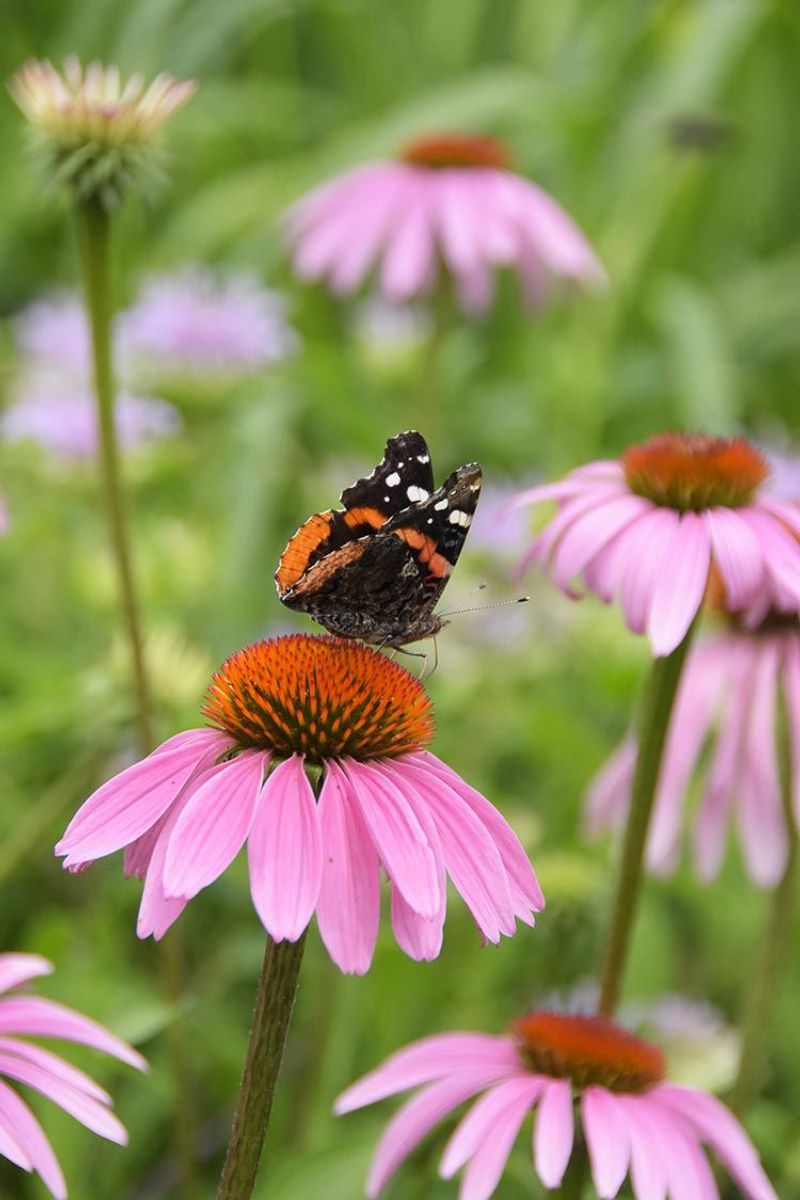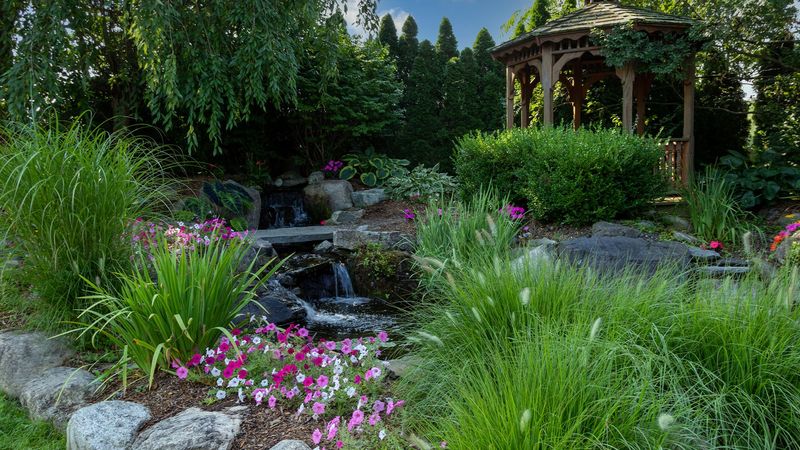Portland gardens can become magical retreats for butterflies and pollinators with a few thoughtful edge plantings. Wildflower borders add vibrant color through the seasons and offer vital habitat. Thanks to the Pacific Northwest’s gentle climate, gardeners here have a unique chance to help these struggling species.
I turned the forgotten edges of my yard into lively pollinator corridors by planting native wildflowers. What used to be dull strips of grass now host butterflies fluttering from bloom to bloom all summer. The change was simple, affordable, and deeply rewarding.
Gardeners in the Northwest have a natural edge—many local plants already support native pollinators. By focusing on garden borders, we create graceful transitions between spaces. Even the smallest yards can become thriving ecosystems with just a bit of intention.
1. Plant Native Asters To Extend Bloom Time
Fall can feel empty in many gardens, but not when you’ve got native asters lighting up your edges! These late-season stars provide crucial nectar when most other flowers have faded.
In my Portland garden, Douglas asters have attracted painted ladies and skippers well into October. Their purple blooms complement autumn’s golden tones perfectly.
Plant them alongside early spring bloomers like Oregon sunshine for a garden edge that feeds pollinators nearly year-round.
2. Mix Early And Late Season Nectar Sources
Hungry pollinators need food from February through November in our region. Strategic planting creates an unbroken food chain for butterflies and bees throughout their active seasons.
Early bloomers like red-flowering currant welcome the season’s first butterflies, while late performers such as goldenrod bid farewell to the last monarchs. For mid-season abundance, nothing beats native penstemons.
My neighbor’s wildflower edge features 12 different bloom times, ensuring something’s always feeding our winged friends.
3. Integrate Milkweed For Monarch Habitat
Monarchs can’t survive without milkweed—it’s the only plant their caterpillars eat. Showy milkweed thrives in Portland’s climate and makes a statement with its pink flower clusters.
Last summer, I watched five monarch caterpillars grow on just two plants at the edge of my vegetable garden. The key is planting milkweed in sunny spots protected from strong winds.
Pair it with shorter native grasses that provide shelter without competing for light or nutrients.
4. Frame Pathways With Low-Growing Bloomers
Garden paths become butterfly runways when lined with short nectar-rich flowers! Self-seeding annuals like California poppies create colorful edges that renew themselves yearly.
The trick is choosing varieties under 18 inches tall that won’t flop onto walking surfaces. Oregon sunshine, beach strawberry, and kinnikinnick make excellent perennial options for sunny Portland paths.
My front walkway sports different blooms each month, making even quick trips to the mailbox an opportunity to spot swallowtails and fritillaries.
5. Combine Coneflowers With Native Grasses
The textural contrast between purple coneflowers and airy grasses creates wildlife magic! Butterflies love landing on coneflowers’ flat landing pads while grasses provide shelter and overwintering spots.
Idaho fescue and tufted hairgrass work beautifully in Portland’s climate. They stay compact enough for garden edges while adding movement when breezes blow.
For maximum impact, cluster coneflowers in groups of at least five plants, then weave grasses between these colorful islands.
6. Incorporate Herbs That Butterflies Adore
Herbs pull double duty as both butterfly magnets and kitchen ingredients! Oregano, thyme, and lavender thrive in Portland’s well-drained soils and attract countless pollinators when allowed to flower.
The secret? Let patches of your herbs bloom rather than harvesting everything for cooking. Swallowtail butterflies particularly love fennel and dill—both for nectar and as host plants for their caterpillars.
My herb border along the driveway edge has become the most butterfly-rich spot in my entire garden.
7. Design With Staggered Heights For Visual Flow
Smart height arrangement creates both beauty and butterfly habitat! Place taller plants like joe-pye weed and Oregon grape toward the back, medium bloomers in the middle, and ground-hugging species in front.
This stepped approach gives butterflies multiple levels to feed and rest. It also creates windbreaks that help delicate fliers navigate even on Portland’s breezier days.
For narrow spaces, I’ve found that even a two-tier system with 3-foot plants behind 1-foot spreaders works wonderfully.
8. Leave Seed Heads Standing Through Winter
Those “messy” seed heads are actually winter wildlife hotels! Coneflower, black-eyed Susan, and native sunflower heads feed birds while their hollow stems shelter beneficial insects during Portland’s wet winters.
Many butterfly species overwinter as eggs or pupae attached to plant material. Leaving garden edges standing until late February provides crucial habitat during our coldest months.
For tidier gardeners, compromise by cutting back just half your wildflower edge in fall, leaving the rest until spring.
9. Create Small Puddle Spots For Thirsty Visitors
Butterflies need more than flowers—they need water too! Male butterflies especially gather at shallow puddles to extract minerals, a behavior called “puddling.”
Creating a simple puddling spot takes minutes: just bury a shallow dish at soil level along your wildflower edge, fill with sand, and add water until just damp. Toss in a pinch of sea salt for extra minerals.
My garden’s puddling dish near the Oregon grape hedge regularly hosts tiger swallowtails on summer afternoons in Portland.

